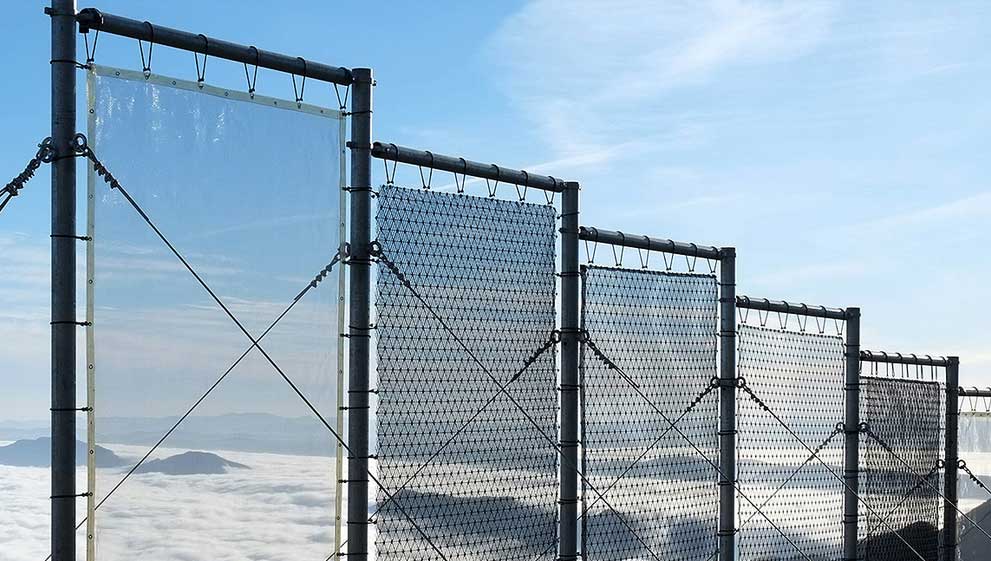Even as children we grow up knowing that water comes from clouds, and we later learn that fog is really a type of cloud at ground level. It’s therefore not too much of a stretch of the imagination to understand that fog also contains water. It’s precisely this thinking that has lead to pioneering new technological developments designed to extract water from fog and mist.
The technology has been refined into a finished working product called CloudFisher. The Cloudfisher units use a fine three-dimensional woven stainless steel mesh ‘nets’. As the fog and mist passes through the mesh, water is captured and effectively extracted from it – the nets can be angled to a position to allow direct flow of the fog movement. This very pure water then runs down the mesh and is captured in the base.
The large surface of the three-dimensional stainless steel mesh allows the water to be captured at a rate of between 10 and 22 litres per square metre of mesh, per day.
The technology allows water to be harvested in very dry and arid areas, particularly in mountainous or coastal areas which have higher levels of inland fog and mist.
The worlds current largest Cloudfisher fog farm is based in Morocco and sports 30 water collection devices with a combined mesh area of 1,682 square meters, providing around 37,000 litres of pure water a day to communities around Mount Boutmezguida.
At DSM we don’t use mesh fine enough to capture fog, but we can, and do, use larger sizes of stainless steel mesh in a variety of products, such as our bespoke laboratory sinks. We can also implement mesh or perforated panels or shelves into our custom made stainless steel frames.
Images:
WIPO Magazine
